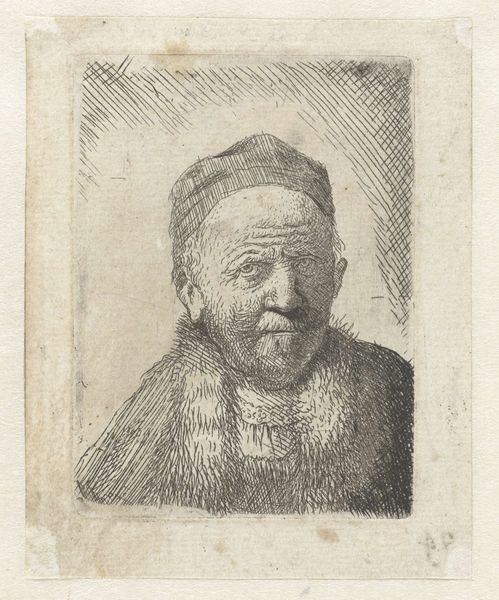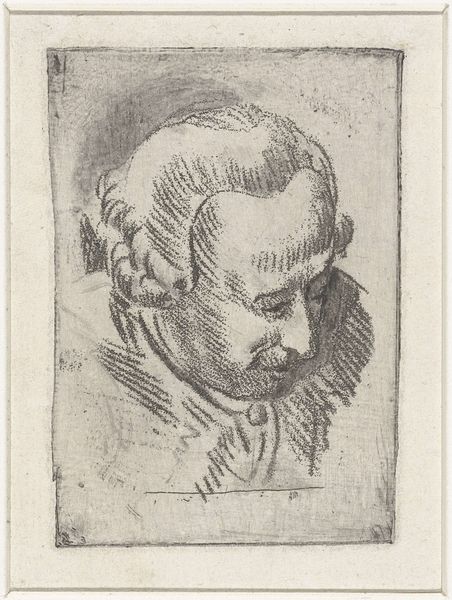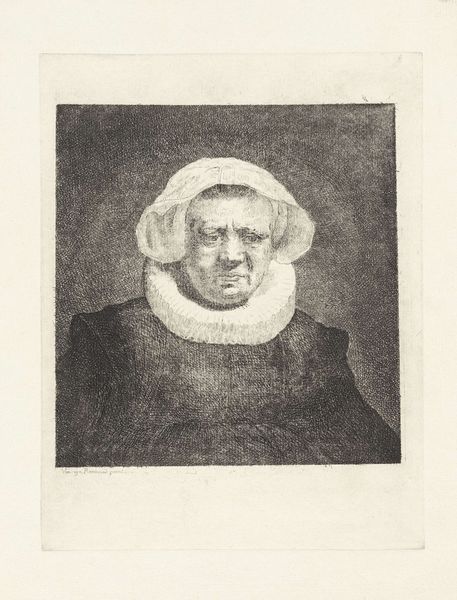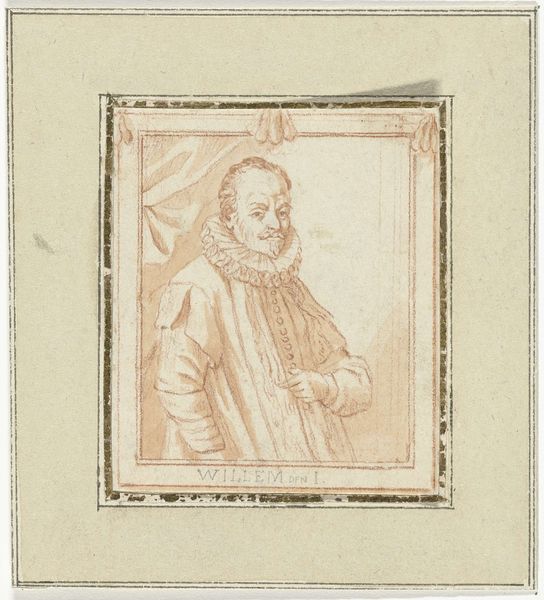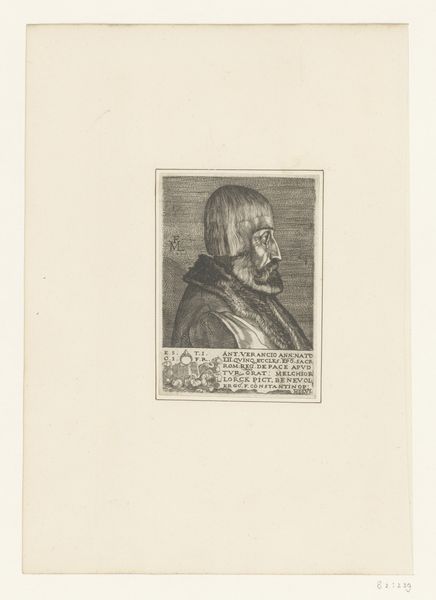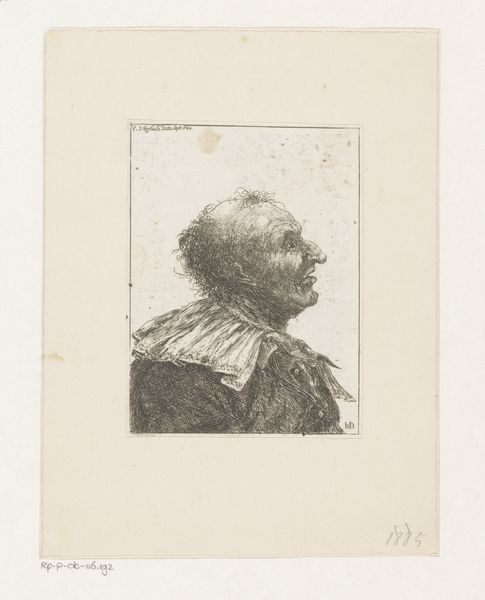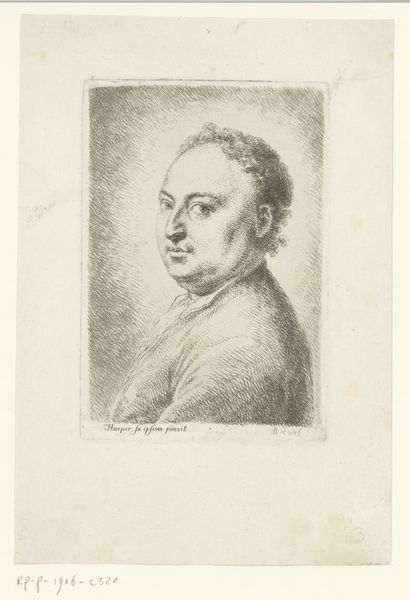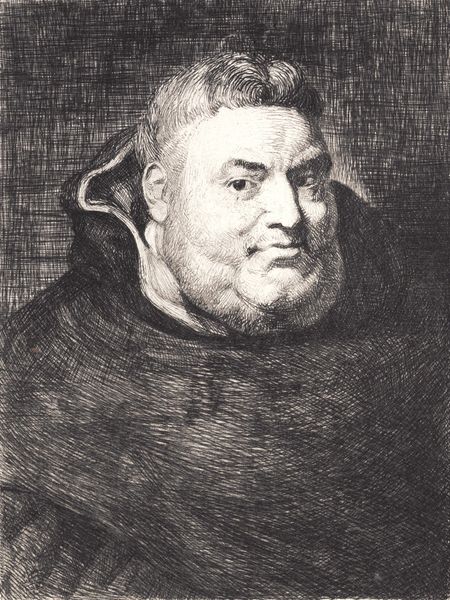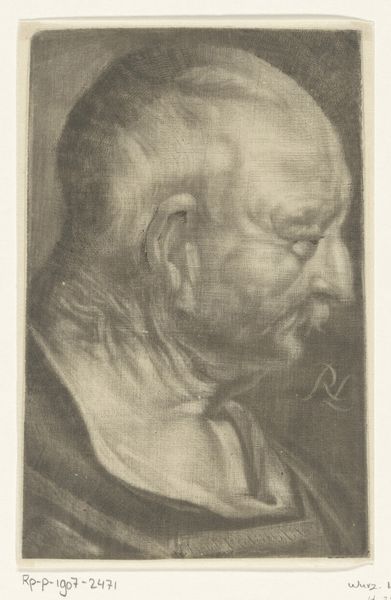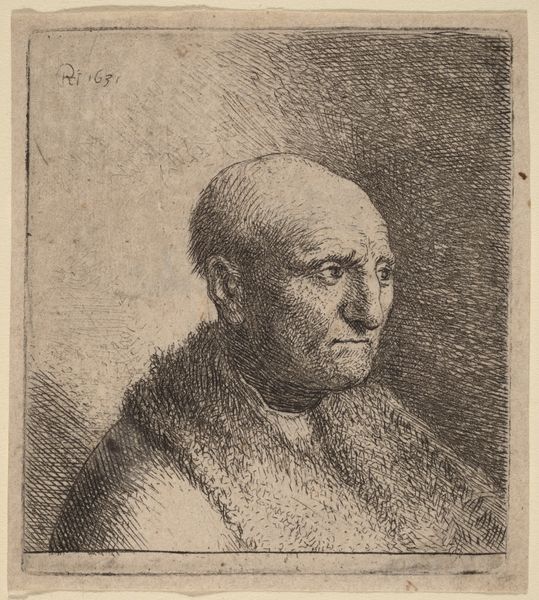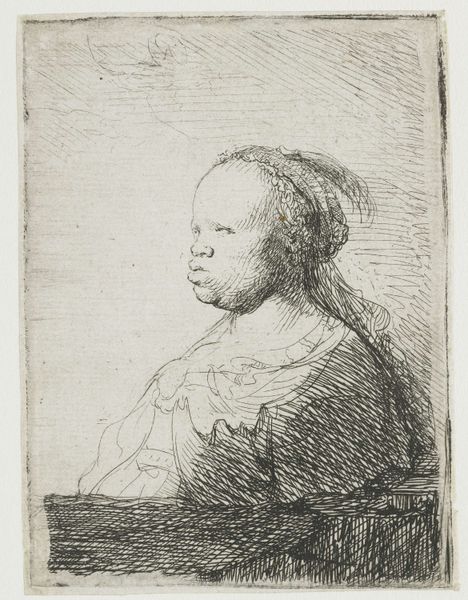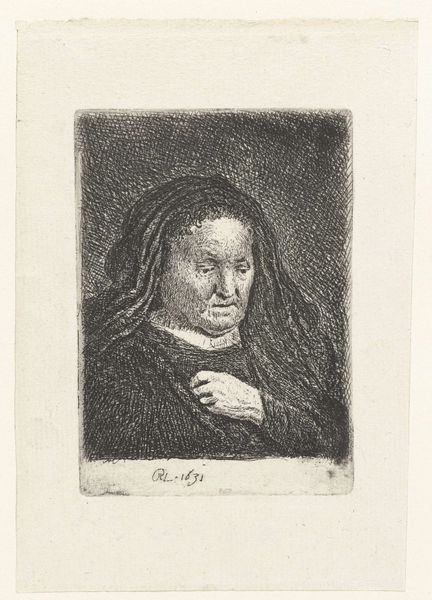
drawing, print, etching, paper, ink, engraving
#
portrait
#
drawing
# print
#
etching
#
pencil sketch
#
paper
#
ink
#
pencil drawing
#
portrait drawing
#
engraving
Dimensions: height 69 mm, width 99 mm
Copyright: Rijks Museum: Open Domain
Curator: This is "Buste van een monnik met bril," or "Bust of a Monk with Glasses," made in 1784 by Amalie Baader. It's an etching, engraving and drawing printed with ink on paper. Editor: He seems weary, doesn’t he? Or maybe deeply contemplative. The artist really captures the texture of the monk’s skin and the fabric of his robe. The hatching gives it a certain weight. Curator: The fact that Baader chose to depict a monk wearing glasses opens up a whole can of worms. The church and religious institutions were facing increasing scrutiny at this time and scientific advancement was forcing everyone to examine tradition versus progress. He’s clearly educated, probably engaged in study, which flies in the face of common stereotypes about monastic life. Editor: Absolutely. There’s an interesting tension here. This piece subtly challenges the conventional image of monks as detached from worldly affairs. It pushes back on the notion that religious figures exist outside intellectual life. I think viewers may perceive it differently now given modern conversations about authority. Curator: The placement of the light is also really intriguing. It catches the lenses of his glasses and draws your attention right to his eyes. I think Baader intentionally created a space for the viewer to think about the role that access to information plays in spirituality, for men, women, and members of the clergy. Editor: Yes! It's not just a portrait; it's a visual commentary on knowledge and power. And let’s not ignore that it’s done by a female artist, which is subversive on its own. How did she navigate the institutional art world at that time and why this subject? Curator: It’s definitely a potent intersection of social and historical narratives, reminding us how artworks can speak volumes about shifting societal attitudes and the individual stories that shaped them. Editor: It certainly challenges assumptions and promotes reflection, doesn’t it? It’s more than just an image from the past.
Comments
No comments
Be the first to comment and join the conversation on the ultimate creative platform.
